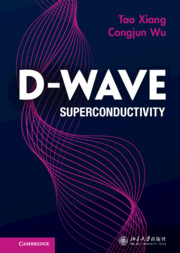Book contents
- Frontmatter
- Contents
- Preface
- Abbreviations
- 1 Introduction to Superconductivity
- 2 Microscopic Models for High Temperature Superconductors
- 3 Basic Properties of d-wave Superconductors
- 4 Quasiparticle Excitation Spectra
- 5 Tunneling Effect
- 6 Josephson Effect
- 7 Single Impurity Scattering
- 8 Many-Impurity Scattering
- 9 Superfluid Response
- 10 Optical and Thermal Conductivities
- 11 Raman Spectroscopy
- 12 Nuclear Magnetic Resonance
- 13 Neutron Scattering Spectroscopy
- 14 Mixed State
- Appendix A Bogoliubov Transformation
- Appendix B Hohenberg Theorem
- Appendix C Degenerate Perturbation Theory
- Appendix D Anderson Theorem
- Appendix E Sommerfeld Expansion
- Appendix F Single-Particle Green’s Function
- Appendix G Linear Response Theory
- References
- Index
12 - Nuclear Magnetic Resonance
Published online by Cambridge University Press: 17 June 2022
- Frontmatter
- Contents
- Preface
- Abbreviations
- 1 Introduction to Superconductivity
- 2 Microscopic Models for High Temperature Superconductors
- 3 Basic Properties of d-wave Superconductors
- 4 Quasiparticle Excitation Spectra
- 5 Tunneling Effect
- 6 Josephson Effect
- 7 Single Impurity Scattering
- 8 Many-Impurity Scattering
- 9 Superfluid Response
- 10 Optical and Thermal Conductivities
- 11 Raman Spectroscopy
- 12 Nuclear Magnetic Resonance
- 13 Neutron Scattering Spectroscopy
- 14 Mixed State
- Appendix A Bogoliubov Transformation
- Appendix B Hohenberg Theorem
- Appendix C Degenerate Perturbation Theory
- Appendix D Anderson Theorem
- Appendix E Sommerfeld Expansion
- Appendix F Single-Particle Green’s Function
- Appendix G Linear Response Theory
- References
- Index
Summary
Chapter 12 studies the property of magnetic response functions of electrons probed by nuclear magnetic resonance (NMR) experiments. The Knight shift is shown to be proportional to the real part of the local magnetic susceptibility. The spin-lattice relaxation, on the other hand, provides an effective measure of the imaginary part of the susceptibility averaged by the interaction form factor over the whole Brillouin zone. The effect of impurity scattering, particularly the impurity induced resonance states, on the NMR spectra is discussed and compared with experimental results.
- Type
- Chapter
- Information
- D-wave Superconductivity , pp. 284 - 305Publisher: Cambridge University PressPrint publication year: 2022



